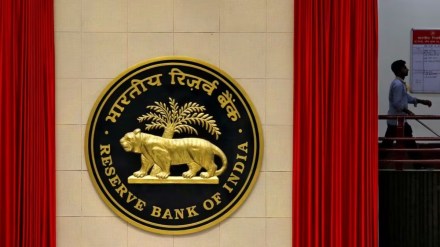By Jamal Mecklai
When I was thinking about RBI’s approach to intervention in the FX market recently, it occurred to me that since Independence, artificially low interest rates automatically meant artificially high inflation; and that while inflation affects everyone, it affects poor people the most. And since India has a huge population of poor people, this approach was effectively putting unnecessary pressure on the largest part of our population, keeping them from reaching their best productivity. In other words, this was bad policy.
RBI has repeatedly said that it has no specific target rate for the rupee in mind and only intervenes to manage volatility. However, to my mind, if it actually has no specific target value, the rupee’s value against the dollar should float with the global market, rising when, say, the dollar (DXY) weakened and falling when it strengthened. The accompanying graphic shows that in this case, the rupee today would have been around 75, about 10% stronger than today’s 83 level. Interestingly, the rupee would have hit 83 in September 2022, almost a year before it actually did, except that it would have strengthened since then, as DXY weakened.
The average value of the rupee between 2019 and today would have been 71.50 instead of north of 76. Seeing how cheap the rupee is in comparison to the dollar and other international currencies, I believe these levels would more fairly reflect purchasing power differences. (I note that this analysis has picked Jan 2019 as a starting point at random—the exercise was primarily to prove a point.)
Of course, the most important aspect of the process I am suggesting is that with the rupee stronger on average, inflation would be lower—in particular, food and energy prices, which form a disproportionate amount of a poor man’s expense basket, would be cheaper.
And with lower inflation, interest rates, too, would be lower than they are today. This would help all parts of the economy and would mitigate to some extent at least any loss of export competitiveness; in any case, with imported inputs forming an increasing percentage of exports, the decline in competitiveness in many industries would be marginal and certainly made up by the stronger domestic market. Most critically, as I have already mentioned, the man in the street would benefit.
To be sure, rupee volatility would be higher since it would very closely reflect the volatility of DXY. However, over the last five years, this would have marginal impact—the average volatility of DXY was just 6.35%, only slightly higher than USD-INR volatility, which averaged 5% over the period. Again, the maximum volatility of DXY over the past two decades was 16.5%, more or less the same as that of the rupee (18.5%). Thus, managing risk would not be much more difficult than it currently is. Importantly, however, this approach would also have the advantage of eliminating the moral hazard that creeps in when, as now, rupee volatility falls too low, would be eliminated—if, for instance, there is a major collapse on Wall Street and global markets move suddenly to risk off, there could be a sharp fall in the rupee and many importers, who are sitting pretty on an almost stock-still rupee would lose their shirts.
RBI intervention would still be necessary to control the volatility to ensure that excess inflows or outflows did not push the rupee too far from this market-determined level. And, changing the approach would certainly have an impact on the reserves, which have grown very nicely from $400 billion in 2019 to more than $600 billion today. However, it is difficult to forecast how reserve growth would change under this different approach. For instance, if there were strong inflows on days when DXY strengthened, RBI would have to buy even more dollars to push the rupee towards its DXY reflection; correspondingly, if there were heavy outflows when DXY weakened, dollar sales would have to be higher. All of this would also impact RBI’s liquidity management.
I’m sure RBI is more than conscious of all of this and has taken educated decisions on choosing its approach. However, given the negative impact the current approach has on inflation, I believe RBI needs to be more transparent in explaining its intervention policy.
The author is the CEO of Mecklai Financial
Views are personal
